Great Design Plant: Asclepias Attractive to Monarch Butterflies
In creamy white with a dash of pink, the little star flowers of milkweeds seem to sparkle and anticipate explosion into parade confetti. Yet their beauty is not their greatest asset. Milkweeds (Asclepias spp) are critical to the survival of monarch butterflies (Danaus plexippus). Monarchs are in decline, partly due to the fact that they reproduce only on milkweeds. No milkweeds, no monarchs.
But not just any milkweed will do. There is a close relationship between monarchs and their local milkweeds. This is because milkweeds from different regions have different chemical compositions. These chemicals can bestow protection from predators, a bellyache and worse. For this reason it is important to select milkweeds that are native to your region.
California native milkweeds are alluring, exuberant, fast growing and easily available. While inviting monarchs, milkweeds also entice many unusual and amusing insects.
Find milkweeds native to your region
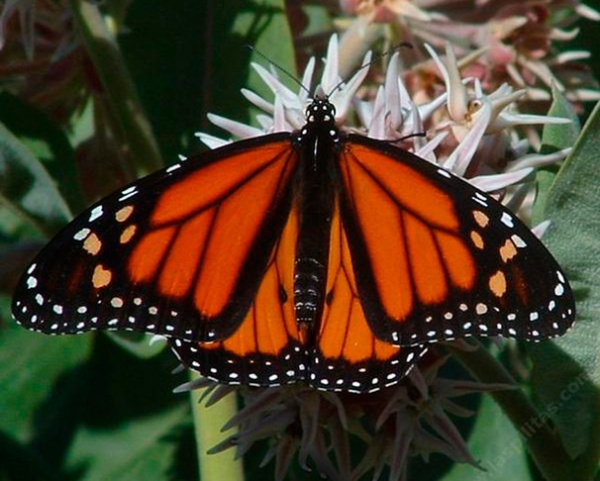
Botanical name: Asclepias spp
Common name: Milkweed
Origin: Throughout California; some are also native to other regions.
Shown: Monarch butterfly feeding on showy milkweed (A. speciosa)
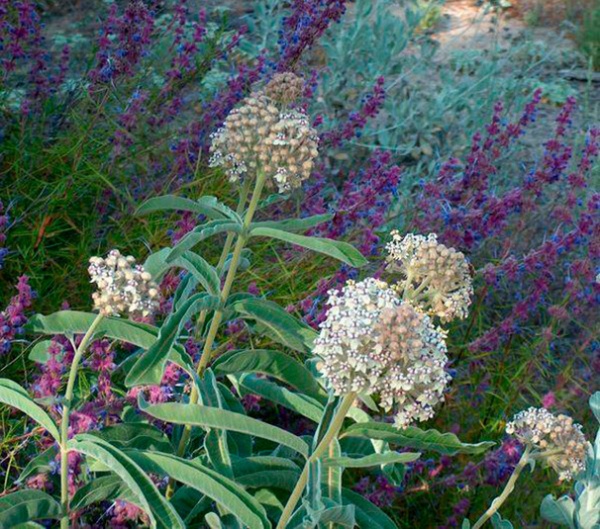
Water requirement: Drought tolerant to moderate water; water only occasionally once it’s established.
Light requirement: Full sun to partial shade; less sun means fewer flowers.
Soil: All are adaptable to many soils and tolerant of clay; A. speciosa prefers clay.
Shown: Indian milkweed (A. eriocarpa) with woolly blue curls (Trichostema lanatum)
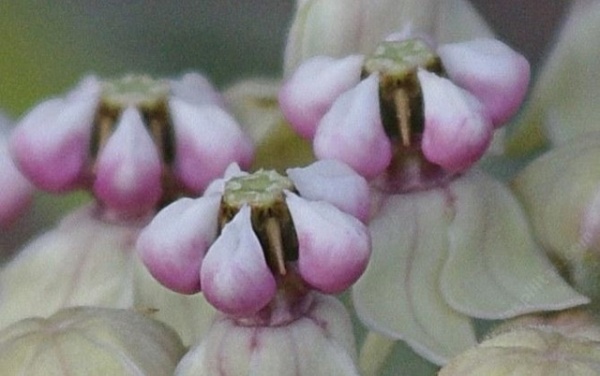
Benefits and tolerances: Tolerant of clay and drought; highly resistant to deer; beneficial in habitat gardens
Seasonal interest: Summer bloom
When to plant: Late fall is ideal. Winter works well. Spring is acceptable. Summer can be challenging to all but the most experienced gardener.
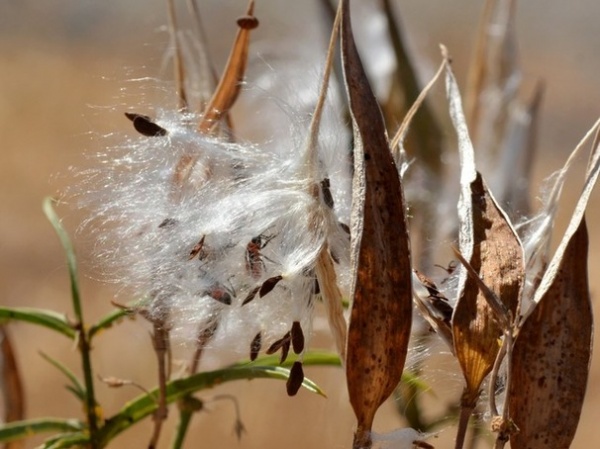
Finding seeds. In response to the monarchs’ need for help, the Xerces Society solicited the cooperation of native-seed companies to launch Project Milkweed. The Xerces Society is nationwide and provides free information about milkweed species native to different regions. Once you know your native species, use the Xerces Milkweed Seed Finder to locate and buy seeds.
Three of my favorite sources for California native seeds are Larner Seeds, the Theodore Payne Foundation and S&S Seeds.
Finding plants. In California you can find native-plant nurseries through the California Native Plant Society. Outside California you can find local native nurseries online or through your university or native-plant society.
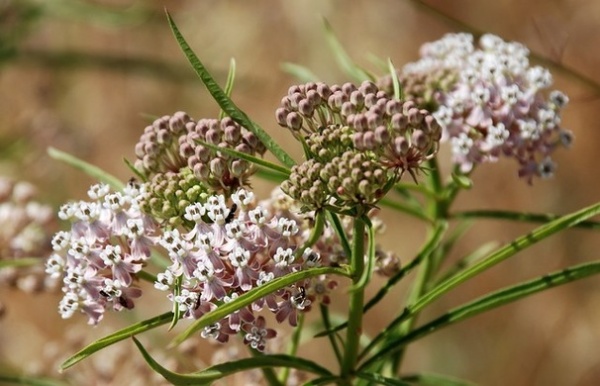
Distinguishing traits. Fragrant star-like flowers burst forth in summer. The narrow-leaf milkweed seen here started blooming in spring. These fast-growing, upright perennials will eventually spread to form colonies or clumps. Summertime brings the monarch caterpillars to munch on them. Pollinated plants have large prominent seedpods in fall that split open, sending out cottony parachute seeds that float on air. Then milkweeds take a beauty rest for the winter. A. eriocarpa may sleep or stay awake, depending on the winter temperatures.
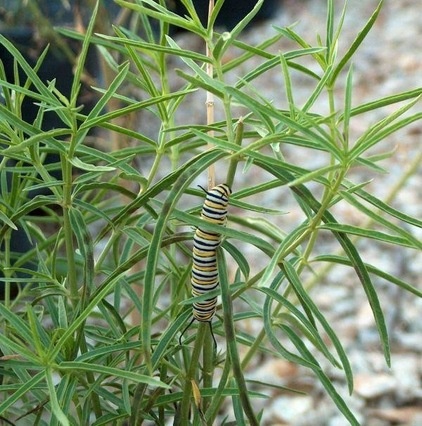
Wildlife value. Milkweeds are excellent for a habitat garden when they have plenty of space in which to spread. They are a nectar source for the adult monarch butterfly, the striated queen butterfly and other butterflies. Monarch caterpillars (like the one seen here) use milkweeds as a host plant — feasting on the yummy juices and building up reserves for its miraculous transformation. If there are monarchs in your area, your plants could be covered in the summer with the striking monarch caterpillars.
Orioles use the dead stems as nest material. Critters eat the seeds, and birds use the cotton for nests. Hummingbirds sip; native bees and honeybees pack their pollen sacks. Everyone enjoys the tasty treat.
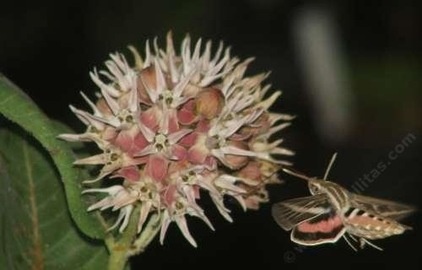
Lots of strange but cool insects find their way to milkweeds for lunch or a midnight snack, such as this hummingbird moth (aka the white-lined sphinx moth, Hyles lineata).
Don’t be worried when you see a bazillion aphids. These are specialized milkweed/oleander aphids. Leave them. Unless you have oleander (Nerium oleander), the aphids won’t bother your other plants and the ladybugs will be in heaven.
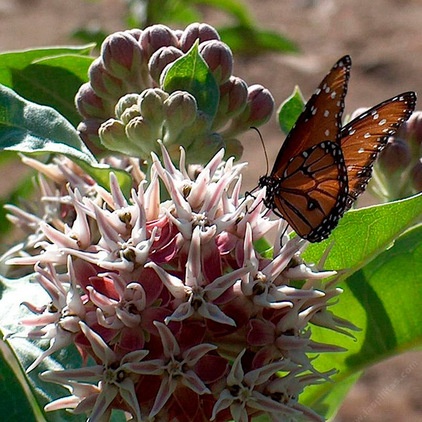
How to use it. It is important to remember that monarch butterflies breed inland. Some say that planting milkweed in coastal overwintering areas can cause the monarchs to become confused. It is clear that increasing the number of inland milkweeds is the optimum approach to boost monarch populations.
Butterflies are drawn to 3½-foot by 3½-foot patches of a single plant species. It won’t be difficult to get a group that size, since a single plant can grow 3 or more feet wide, and these milkweeds spread. Yet, the larger the area of milkweeds, the more likely the monarchs will choose your garden. And remember to include other nectar flowers for the adult butterflies too — that’s a subject for another story.
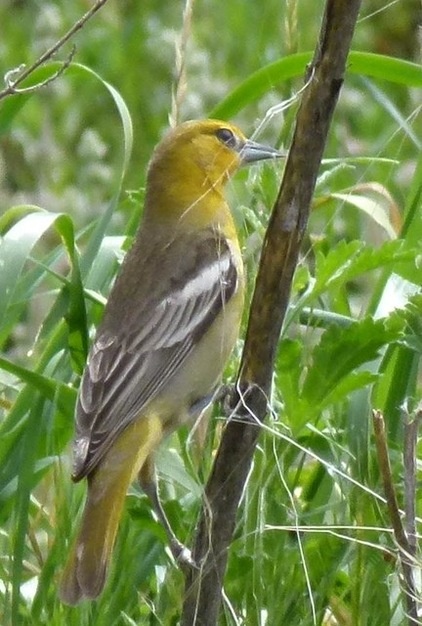
Care notes. When the plants go dormant, you can cut them back to the ground. Or you can leave the plant parts for the birds, like this Bullock’s oriole, to use for nesting.
Some recommend marking the location of plants, since they can completely disappear in the winter.
Removing or killing aphids and other bugs may also kill beneficial insects. The bad bugs attract the good bugs. Leave them and the good guys will have a feast.
Never use pesticides, herbicides or other toxins in your habitat garden.
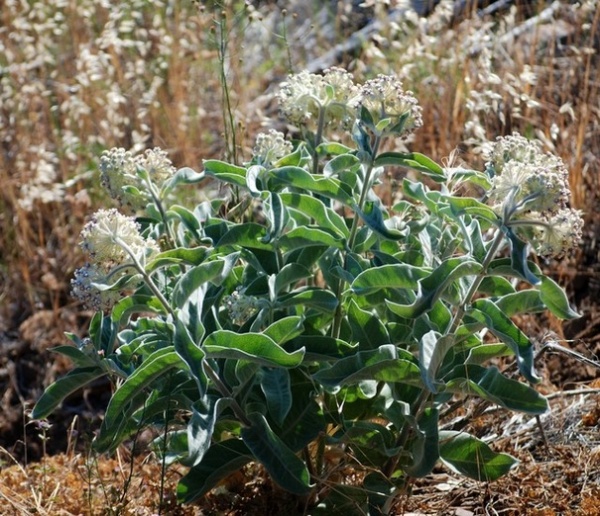
Indian Milkweed
(Asclepias eriocarpa)
Origin: Native only to California; found throughout California, except in montane regions
Natural habitat: Chaparral and central oak woodland; dry, barren areas and along stream banks; 600- to 6,000-foot elevation
Where it will grow: Hardy between -30 and 25 degrees Fahrenheit (USDA zones 4 to 9; find your zone)
Benefits and tolerances: Very drought tolerant
Mature size: 1 foot to 3 feet high; spreads by rhizomes
Indian milkweed is a highly drought-tolerant species. It resembles showy milkweed (A. speciosa) but is shorter, with fuzzier leaves. Indian milkweed’s bluish-gray woolly leaves hint at lamb’s ears. Its 4- to 5-inch, white to creamy flower clusters sometimes have a splash of purple. Its delicate fragrance is a lovely contrast to its tough constitution.
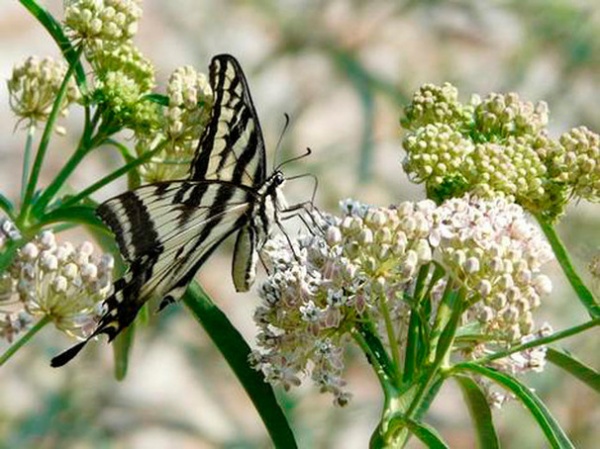
Narrow-Leaf Milkweed
(Asclepias fascicularis)
Origin: Throughout California except the coast and deserts; Baja California and other regions
Natural habitat: Chaparral, mixed-evergreen forest, riparian areas (near rivers and creeks), southern oak woodland, yellow pine forest, dry areas, valleys, foothills; 150- to 600-foot elevation
Where it will grow: Hardy between -10 and 35 degrees Fahrenheit (zones 6 to 10)
Benefits and tolerances: Drought tolerant; tolerates dense coastal clays and seasonal flooding; more garden tolerant than most
Mature size: 3 to 4 feet tall; spreads to form a small colony
Highly adaptable to gardens, narrow-leaf milkweed sends its sweet floral fragrance on the breeze. Five-inch flower clusters — greenish white tinged with pink or purple — and long, narrow leaves are the signature of this species. In the Bay Area it is highly prized by monarch mothers looking for a home for their young. Dormancy in the fall to winter is typical.
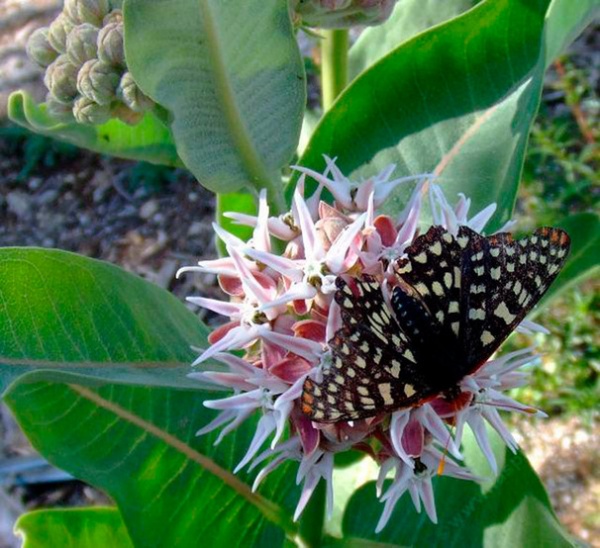
Showy Milkweed
(Asclepias speciosa)
Origin: Throughout most of California; also in Canada and the U.S. Midwest
Natural habitat: Mixed-evergreen forest and yellow pine forest; many habitats, including fields and roadsides; under 6,000 feet
Where it will grow: Hardy between -40 and 25 degrees Fahrenheit (zones 3 to 9)
Benefits and tolerances: Highly garden tolerant; tolerant of alkaline soils
Mature size: Upright plant 2 to 4 feet high; spreads through rhizomes into large clumps
Showy milkweed is, as its name implies, a showstopper! Soft pink blooms in 4- to 5-inch clusters and 5-inch luxurious, fuzzy leaves put on a stunning and highly fragrant display in summer. Then showy milkweed goes dormant for the cool months.
The pollen of showy milkweed is incompatible from the same plant and from genetically identical plants. It needs cross-pollination to develop fruit and seeds. If you want your plants to go to seed, then buy seeds or buy multiple plants from different sources.
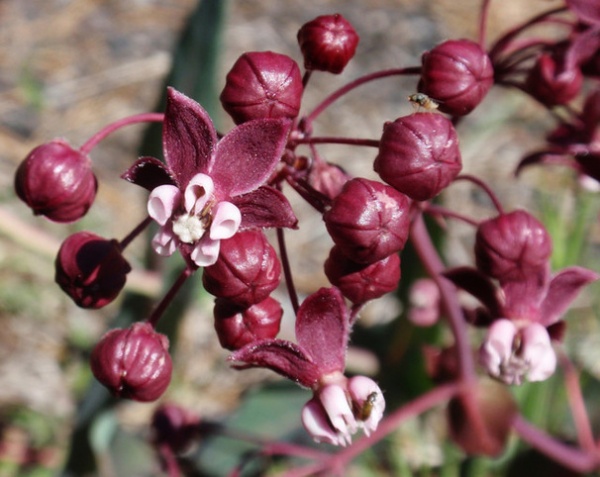
Other cultivars and species. A. speciosa ‘Davis’ is a robust and highly garden-tolerant cultivar. Other interesting species native to California are woolly milkweed (A. vestita), California milkweed (A. californica) and heartleaf milkweed (A. cordifolia), seen here.
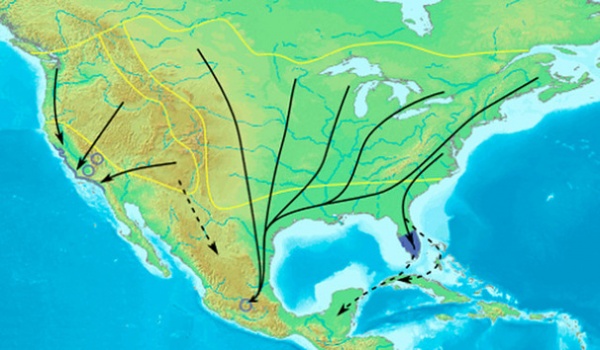
The complex migration routes of monarch butterflies. Select milkweeds that are native to your region.
Photo by Harald Süpfle
Learn more about gardening with plants native to your area












